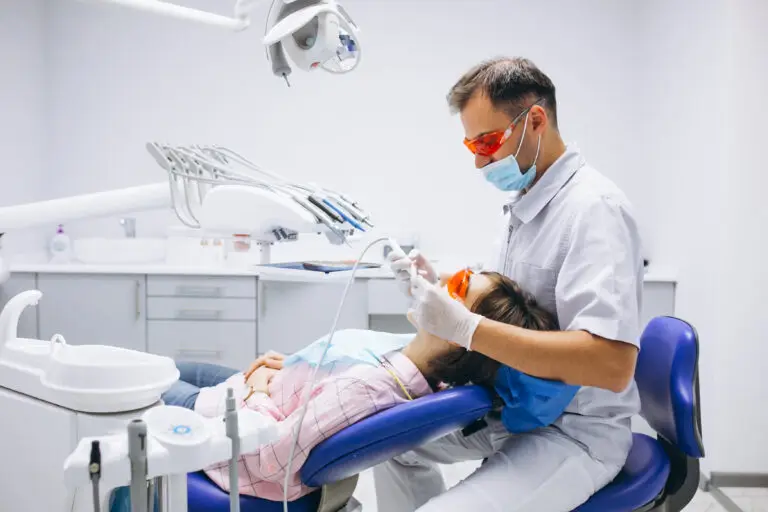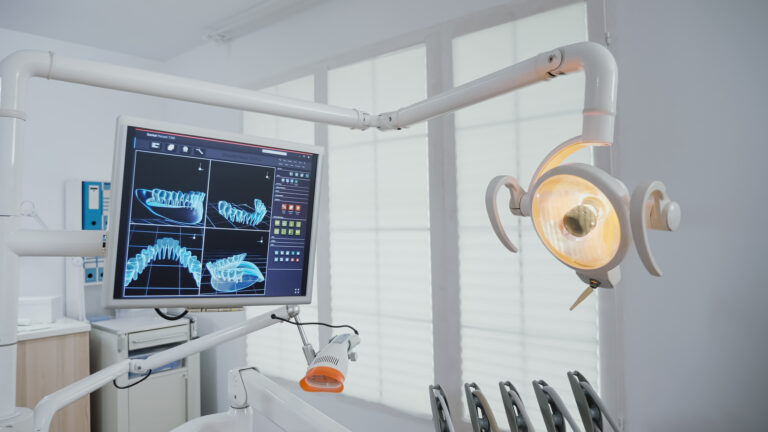Why Demand Forecasting for Dental Consumables Matters
Table of Contents
Introduction
For Healthcare MSMEs dealing in dental consumables, running out of stock or holding too much can quickly hurt profits.
Clinics rely on the timely availability of dental tools, gloves, syringes, impression materials, and sterilization supplies.
Poor planning leads to either missed sales or cash stuck in slow-moving stock.
That’s why learning how to forecast demand for dental consumables is not just helpful, it’s essential.
When you plan ahead, you improve inventory turnover, reduce waste, and meet clinic demand on time.
Whether you supply to solo dentists or group practices, understanding consumption patterns and preparing smartly will keep your operations smooth and your buyers happy.
In this guide, we’ll walk you through simple yet powerful forecasting strategies that small suppliers, distributors, and even clinic owners can use.
Let’s begin with identifying the right factors that influence demand.
1. What are the key factors that influence demand for dental consumables in clinics and labs?
Key Factors That Influence Demand for Dental Consumables in Clinics and Labs
To forecast demand for dental consumables accurately, suppliers and clinics must understand what really drives usage.
Several practical variables shape daily and monthly demand:
1. Patient Volume:
The most direct factor.
A clinic seeing 25 patients a day will use far more dental instruments, gloves, syringes, and sterilization pouches than one seeing 8–10.
Weekday and weekend footfalls also matter.
2. Seasonal Procedures:
Demand spikes often happen before wedding seasons, holidays, or school vacations, when patients prefer getting cosmetic or orthodontic treatments.
For example, whitening kits and aligner supplies may peak during festive months.
3. Insurance Cycles:
In some cities, clinics tied to insurance-based patient flow see demand rise during claim periods or just before the fiscal year-end, affecting product movement like impression materials and crown cements.
4. Specialty Trends:
A clinic focused on orthodontics will use different dental tools than one offering general or pediatric dentistry. The shift in trends (e.g., more cosmetic procedures post-COVID) also influences supply needs.
5. Lab Tie-Ups and Package Deals:
Clinics bundled with in-house or partner labs may order specific items in bulk depending on common treatments like dentures, implants, or root canals.
By keeping track of these trends, Healthcare MSMEs and dental equipment vendors can improve inventory management, stock smarter, and avoid both overstocking and stockouts.
2. How Can Small Dental Suppliers Use Past Sales Data to Forecast Future Demand Accurately?
For small dental suppliers, one of the easiest and most effective ways to forecast demand for dental consumables is by studying past sales data.
It’s simple, low-cost, and can prevent costly inventory mistakes.

1. Use Monthly Sales History
Start by reviewing monthly product-wise sales for the past 6–12 months. Look for:
- Which dental tools are sold consistently
- Seasonal peaks (e.g., more gloves during flu season)
- Any sudden drops (could signal demand change or customer loss)
This helps identify baseline demand and monthly fluctuations.
2. Track Repeat Client Patterns
Regular clients, such as small clinics or labs, often order the same set of dental consumables in predictable cycles.
By noting:
- Order quantity
- Time gaps between orders
- Payment behavior
You can better estimate when they’ll reorder and how much they need.
3. Measure Reorder Frequency
Analyze how often products like sterilization pouches, syringes, or impression materials are reordered.
High-frequency items indicate stable demand and should be stocked proactively.
4. Segment by Product Category
Not all items move at the same speed.
Track consumables (fast-moving) separately from instruments (slow-moving).
This helps improve inventory management and avoid tying up cash in slow movers.
5. Identify Top 20% Products
Using the 80/20 rule, focus on the 20% of items that drive 80% of your revenue. These are your forecasting priorities.
Don’t waste time over-analyzing rare-use items.
By applying these basic steps, Healthcare MSMEs and dental distributors can build a simple forecasting model, no software needed.
Better forecasts mean better inventory turnover, less wastage, and more cash flow.
3. What Tools Can Help Vendors or Distributors Predict Inventory Needs for Dental Consumables?
For Healthcare MSMEs and small dental distributors, choosing the right tools to forecast demand for dental consumables is crucial.
It improves inventory management, reduces dead stock, and keeps your cash flow healthy.
Here are simple, practical tools to get started:
Google Sheets or Excel (Low-cost, High-Control)
- Why use it? It’s free, flexible, and perfect for early-stage businesses.
- You can create monthly sales logs, reorder trackers, and demand patterns.
- Add formulas to highlight low-stock alerts or calculate average monthly sales.
- Great for those who want full control without paying for software.
Zoho Inventory (Cloud-Based, Smart Forecasting)
- Suitable for dental tools and dental equipment sellers.
- Tracks stock in real-time and generates demand reports.
- Integrates with sales platforms and offers reorder alerts.
- Best for small vendors scaling operations with multiple clients.
Marg ERP (Popular in the Indian MSME market)
- Tailored for medical supplies and dental consumables inventory.
- Offers batch tracking, expiry alerts, and monthly usage forecasting.
- Helps with GST invoicing, procurement planning, and vendor tracking.
Demand Planning Calculators (Simple & Customizable)
- Create your own in Google Sheets:
- Inputs: average monthly sales, lead time, buffer stock.
- Output: Ideal reorder quantity.
- These basic calculators can act as your inventory forecast model.
By using these tools, even a small distributor can move from reactive to proactive inventory management.
As a result, you’ll minimize stockouts, reduce wastage, and better serve dental clinics with timely deliveries.
4. How Do Festivals, Exam Seasons, or Local Events Affect Dental Consumables Usage in Tier 2/3 Cities?
In Tier 2 and Tier 3 cities, Healthcare MSMEs and dental suppliers must factor in local events when planning inventory management.
These regions see noticeable demand fluctuations for dental consumables like whitening kits, gloves, syringes, and dental tools based on seasonal and social trends.
Festival Seasons = Cosmetic Demand Surge
- Before major festivals like Diwali, Eid, or wedding seasons, there’s a rise in teeth whitening and cleaning procedures.
- Clinics stock up on whitening kits, polishing pastes, and cosmetic tools.
- Patients want aesthetic treatments before social gatherings, boosting short-term demand.
Exam & School Seasons = Drop in Procedures
- During school board exams or college entrance periods, dental visits are reduced.
- Routine check-ups and elective procedures are postponed.
- This leads to lower demand for syringes, gloves, and general-use consumables.
Rainy Season = Increased Infections
- Monsoons in Tier 2/3 cities bring oral infections, gum issues, and flu-related complications.
- Clinics often order more antiseptic rinses, disposable tools, and sterilization supplies.
Local Events = Temporary Demand Spikes
- Religious yatras, fairs, or medical camps can create a temporary spike in patient footfall.
- If anticipated correctly, clinics can prepare by stocking basic dental instruments and disposables.
Key Tip: Vendors must forecast demand by mapping these trends into sales calendars. This approach ensures that dental consumables are available when demand peaks, without overstocking during lean periods.
5. How Often Should Dental Vendors Review and Adjust Their Demand Forecast Models?
To stay efficient and avoid overstocking or stockouts, dental vendors must update their demand forecast models regularly.
For most Healthcare MSMEs dealing in dental consumables, a fixed forecast once a quarter is no longer enough.
Monthly Forecasting is Ideal
Most dental clinics follow a 30-day replenishment cycle. So, vendors supplying dental tools, dental instruments, and consumables should review forecasts monthly.
This allows them to:
- Track fast-moving vs. slow-moving items
- Adjust for seasonal changes
- Reorder only what’s needed
Bi-weekly Updates for High-Volume Items
If a vendor sees high order velocity on items like gloves, syringes, or filling materials, a bi-weekly forecast adjustment is smarter.
These items are:
- Frequently used
- At risk of sudden stockouts
- Essential for daily operations
Watch These Inventory Management Metrics
To decide when to adjust your forecast, monitor:
Metric | Why It Matters |
Stock Turnover Ratio | Shows how fast inventory is moving |
Reorder Frequency | Helps predict restocking timelines |
Order Fill Rate | Reveals if you’re meeting the clinic’s demand on time |
Stock Aging Report | Prevents the expiry of slow-moving items |
Final Tip: Use basic digital tools like Zoho Inventory or Google Sheets to automate your monthly reviews.
The goal is to stay responsive, not reactive, to changes in dental consumables demand.
6. What Are the Risks of Poor Forecasting in Dental Consumables, and How Can It Hurt Working Capital?
Poor forecasting in dental consumables can silently eat into your profits and freeze your cash flow.
Many Healthcare MSMEs in the dental supply chain often overlook this, but the consequences are serious.
Overstocking Expiry-Sensitive Items
Items like dental gels, syringes, gloves, and disposables have limited shelf life. When you overestimate demand:
- Stock expires before it is used or sold
- Loss becomes 100% of the item’s value
- Storage space is wasted
This is a direct hit to your working capital.
Stockouts During Demand Peaks
On the flip side, if you underestimate demand, you may run out of:
- Whitening kits during the wedding or festival seasons
- Local anesthesia cartridges during high OPD weeks
This means:
- Missed orders
- Lost customers to better-prepared competitors
- Damaged reputation with clinics
Cash Locked in Slow-Moving Stock
When inventory doesn’t move:
- Your capital is stuck on shelves instead of earning revenue
- You can’t use that cash to invest in fast-selling dental tools or instruments
- You may miss out on supplier discounts due to a lack of liquidity
How to Avoid These Risks:
- Use monthly sales data to forecast demand
- Track inventory turnover ratios
- Set reorder points and buffer stock limits
- Use inventory management tools to automate alerts
In summary, poor forecasting creates invisible costs.
But with smart tools and regular reviews, dental equipment vendors and suppliers can improve demand planning and protect their working capital.
Conclusion: Stay Ahead with Smarter Dental Consumable Forecasting
For Healthcare MSMEs dealing in dental consumables, demand forecasting is not optional; it’s essential.
By understanding factors like patient trends, seasonality, and insurance cycles, suppliers can stay better prepared.
Regularly analyzing past sales, reorder frequency, and buyer behavior gives you the power to predict what’s needed and when.
Using simple tools like Zoho Inventory, Marg ERP, or even Google Sheets can help automate and streamline your inventory management.
It also reduces risks like overstocking, expiry-related losses, and last-minute stockouts that choke your working capital.
Moreover, adjusting forecasts every few weeks based on real-time data ensures better control, faster decision-making, and more satisfied clinic customers.
With smarter planning, you’ll unlock cash, reduce wastage, and grow your business sustainably.
Following Video Might be Helpful for You
Also Read,
- The Ultimate Guide: Working Capital Loans for Small Business (MSMEs) in 2025
Understanding the Impact of Payment Terms on Working Capital for Clinics
How Poor Inventory Management Hurts Working Capital in Pharmacies.
Want a Better Business Credit Score? Small Pharmacies Can Now Use UPI & Cards to Build It
Want a Better Credit Score? Use Small Daily Payments to Build Your CBIL (For Clinics & Pharmacies)
Case Study:How a Small Clinic Improved Its Working Capital Management





